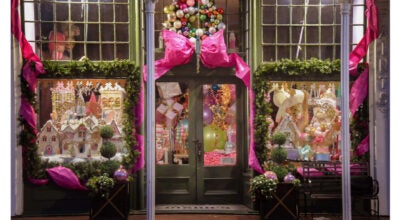Kudzu continues to cover southern landscape
Published 12:05 am Sunday, July 28, 2013

Justin Sellers/The Natchez Democrat — Kudzu nearly covers every tree and structure along Lumber Street.
It’s not just a plant; in the South, it’s legend.
And like a creature from mythology that grows seven heads for every one that is cut off, kudzu has been snaking its way up trees, down bayous and across power lines in the south for more a century.
Introduced in the late 1800s as an ornamental plant and planted as a soil conservation aid until the 1950s, the rapidly growing vine — also known as Japanese arrowroot — can climb 100 feet and sprawl 50 feet out, aggressively propagating as much as 50 feet every new growing season, earning it the nickname “the plant that ate the South.”
And it’s trying its best to take a bite out of Natchez.

Kudzu overtakes a truck parked in a lot near the corner of Monroe and North Rankin streets Wednesday.
In the years it wasn’t in use, kudzu tried to claim Jefferson College — the Mississippi Department of Archives and History has long since beaten it back — and the plant has started creeping up the sides of the abandoned historic Arlington. The rural countryside is dotted with houses that have been transformed into kudzu shacks.
But while the plant’s introduction to the United States was for ornamental purposes, Historic Natchez Foundation Director Mimi Miller said the aesthetic boost came at a terrible cost to historic structures.
“I love the way vines look on a historic building, but people work with preserving old buildings tremble when they see old vines on them,” Miller said.
“It eats out the mortar, and it sucks all the moisture out of the joints and may ultimately cause structural problems. With wood it is also not good — it rots the wood straight through.”
Historic properties aren’t the only locations that face the vine invasion.
Penny Rachal lives on property that abuts an abandoned railroad track, which provided a safe highway for the vines to creep. They snuck up to her backyard and soon claimed the fence line.
“Once it gets going, it connects, and it doesn’t take it long to get to the house if you let it,” she said.
Rachal had the plants sprayed this summer and she keeps them cut back and away from the fence, but she’s already seeing new sprouts again.
“It is like a wildfire,” she said. “One moment you see it and it is over there, the next moment it is right next to you.”
The vines long ago claimed the Natchez bluff and are even making their way into the downtown area.
Marcus Jackson’s detailing business on Franklin Street is one of the apparent targets. The vines crept along the low-lying gully that runs along Franklin up to Martin Luther King Jr. Street before making their way up the hill to Jackson’s commercial lot.
He mows the area regularly and sprays chemicals to beat the vines back, Jackson said, but it’s a never-ending battle. He’s done it this summer, but the vines are already sending tendrils back into the lot.
“I can kill it for the summer, but the next summer it is going to be right back,” he said.
Part of what makes fighting kudzu so difficult, Adams County Extension Service Director David Carter said, is that it’s a hardy plant and the chemicals that can effectively kill the vines are generally rated as restricted-use.
“It can be controlled with 24d or Roundup — it won’t eliminate the kudzu, but it will knock it back,” Carter said. “It is hard to kill the whole mother root system.”
According to the U.S. Forest Service’s Invasive Plants Resource Center, a mature kudzu taproot can be as much as seven inches wide and can run six- to 12-feet deep; a single root can generate as many as 30 vines, and each new vine can put down roots and grow new plants wherever it contacts soil.
During the cooler months the vines drop their leaves and leave bone gray branches behind, but as soon as the warm weather returns, so does the greenery — and with the greenery, new growth. According to the U.S. Department of Agriculture’s Agricultural Research Service, it grows at a rate of 150,000 acres a year.
Much of that acreage is in forestland. As the vines overtop the forest vegetation, it reduces the amount of light, water and nutrients the native forest plants can receive. Over time, that suppresses native vegetation, leaving dead trees to act only as poles for the vines to stretch toward the sun.
“The damage each year is in the billions of dollars,” Carter said. “Kudzu will get in those pine plantations and choke those trees out. It takes up a tremendous amount of forestry land.”
Kudzu has some practical uses — some people turn its flowers into jelly, and it can be used in the treatment of alcoholism — but those uses are limited.
“Livestock will eat it, but we never recommend it for that, and has a very limited effectiveness for erosion control,” Carter said. “The costs outweigh the benefits.”
And so, like the hydra, even if cutting off the head doesn’t stop it, the fight against Kudzu’s voracious appetite has to continue, one spraying, one cutting at a time.
“Kudzu is kind of like the wild hog — it isn’t going away any time soon, and it is probably going to get worse before it gets better,” Carter said.






